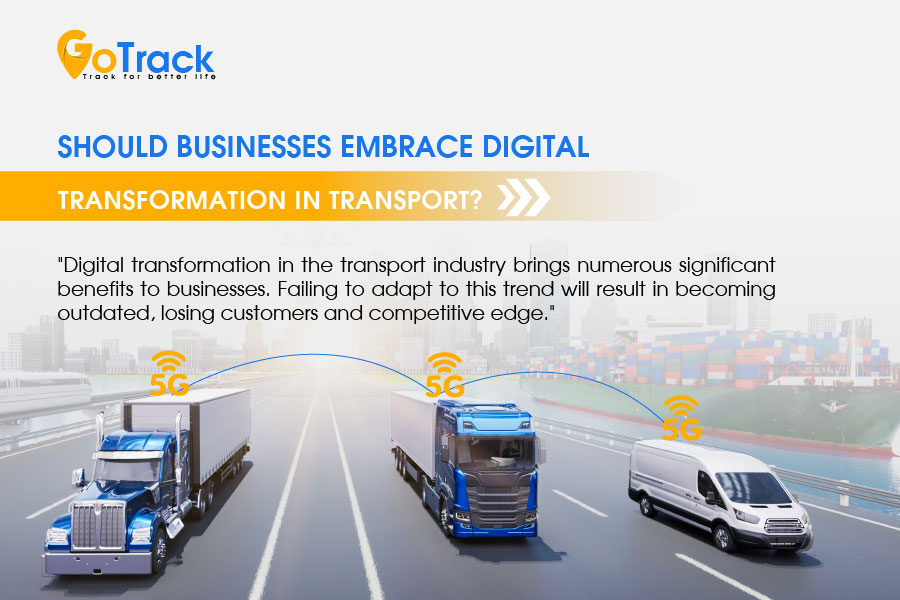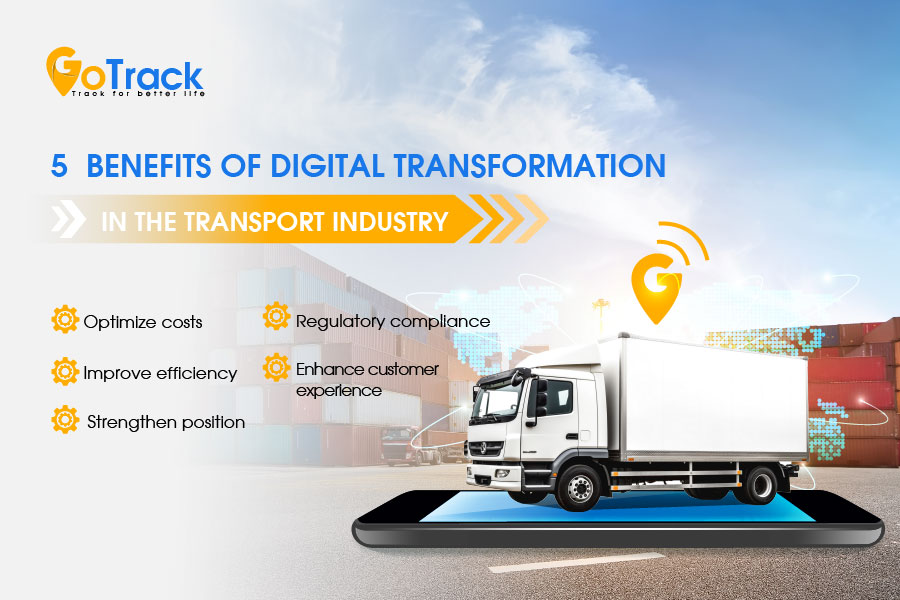Digital transformation in the transport industry is a growing trend and a top priority for managers in the era of Industry 4.0. With the goal of continuous innovation and improvement, many businesses in this sector are actively embracing digital transformation.
Let’s explore with GoTrack the five key reasons why businesses must keep up with this trend!
Why should businesses follow the digital transformation trend in transport?
With rapid technological advancements and the increasing replacement of manual tools by innovative solutions, digital transformation in transport has become inevitable for every business. Traditional transport companies are facing numerous challenges, including rising fuel costs and intensifying competition, making it difficult to expand and develop.

The adoption of digital technology in fleet management and journey monitoring brings significant benefits, becoming an essential part of modern fleet operations. Businesses that fail to adapt to this trend will gradually fall behind, losing customers and their competitive position in the market.
Benefits of digital transformation trend in transport
Optimizing operational costs
To maximize profits, one of the most effective solutions is leveraging modern technology to optimize fuel costs, vehicle maintenance and repairs, and damage compensation.
Fuel sensor devices enable businesses to monitor real-time fuel consumption, identify sources of waste, and make timely adjustments. Journey monitoring systems also help optimize routes, minimize unnecessary travel distances, and reduce fuel expenses.
Read more: GPS Tracking devices GT-S8
Additionally, tracking vehicle conditions allows businesses to proactively schedule maintenance, preventing breakdowns that disrupt operations and avoiding costly repairs or compensation.
Enhancing management efficiency
Digitizing operational processes enhances fleet management efficiency by simplifying complex manual workflows. Through monitoring systems, data such as journey records, driver information, driving behaviors, and vehicle status are automatically updated and reported. As a result, managers can monitor and oversee their fleet remotely 24/7.
Moreover, driver management systems help businesses control work schedules, detect violations of driving time regulations, and prevent fraudulent activities. This ensures workplace safety, reduces accident risks, and enables more transparent payroll and bonus calculations. Automating processes also reduces administrative workloads, increases efficiency, and minimizes errors.

Improving customer experience
For transport businesses operating large fleets, failing to optimize order processing, delivery times, and passenger pick-up/drop-off schedules can lead to dissatisfied customers. Digital transformation streamlines workflows, reducing wasted time and allowing employees to focus on better customer service.
Additionally, technology enhances transparency and operational efficiency, helping businesses build trust with customers. This not only strengthens customer loyalty but also attracts new clients.
Strengthening competitive advantage
In the era of Industry 4.0, businesses that quickly adapt and innovate will gain a significant competitive edge. A well-managed fleet with streamlined processes and high-quality services leads to increased work efficiency and higher customer and partner satisfaction. Conversely, companies that resist digital transformation will struggle to keep up with rapid changes, risking obsolescence and losing their industry standing.
The digital transformation trend ensures legal compliance
Digital transformation in transport is gradually becoming a legal requirement for businesses. Many countries have introduced regulations mandating the adoption of digital technologies such as cameras, journey monitoring devices, warning systems, and driver identification cards for transport operators. Companies that fail to comply with these mandatory technologies risk fines or even operational suspension.



